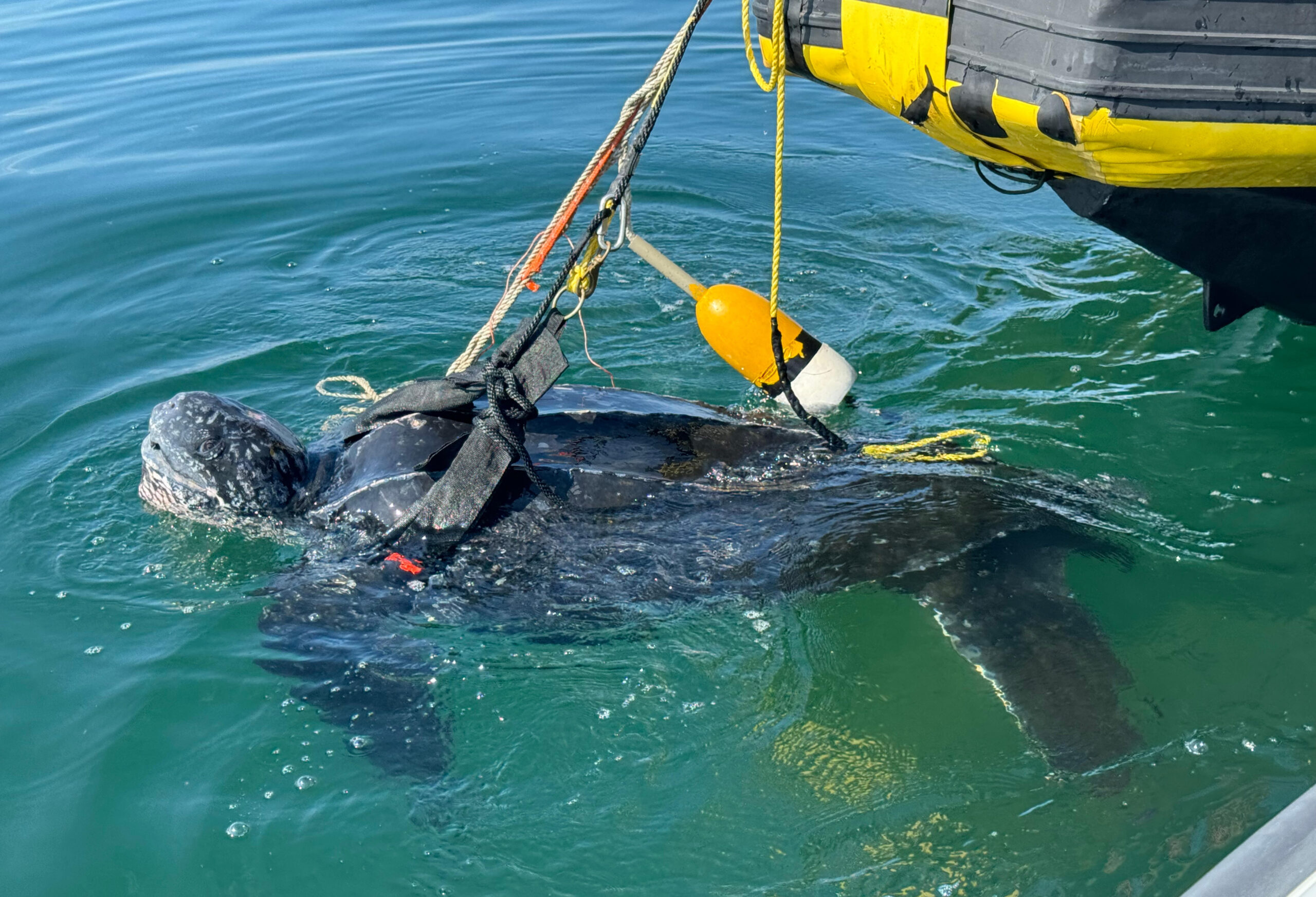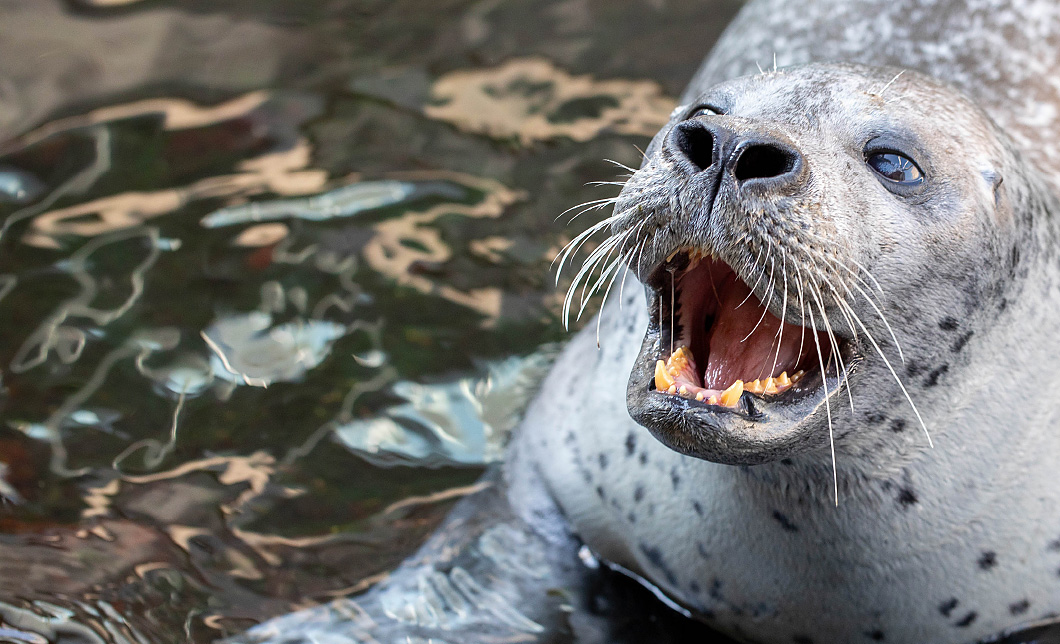
BARNSTABLE, MASS. (July 22, 2024) – A leatherback sea turtle, the largest sea turtle species in the world, was disentangled late last week and is swimming freely after three local organizations worked together to assist the animal in Cape Cod Bay.
**PHOTOS AVAILABE HERE, WITH COURTESY/CREDIT INFO IN FILE**
On Thursday, July 18, New England Aquarium Anderson Cabot Center for Ocean Life scientists and members of the Aquarium’s Animal Health team and Sea Turtle Rescue and Rehabilitation team responded to help the turtle, entangled in fishing gear, along with trained responders from the Center for Coastal Studies (CCS) and the Barnstable Harbormaster. The turtle is about 6 ft long (the shell measured just over 55 inches (140 cm)) and estimated to weigh around 400 pounds.
“The turtle had a rope entanglement around the shoulder region of its right front flipper, but fortunately it was detected quickly and the gear was still loose with minimal damage to the flipper,” said Dr. Melissa Joblon, the Aquarium’s Director of Animal Health. “Overall, the turtle appeared healthy, active, and in great body condition, so we suspect it will do very well after release.”
The turtle was disentangled, given a health assessment including bloodwork, and tagged with satellite and acoustic tags for post-release monitoring. The tags applied include an acoustic transmitter, which operates like an EZ Pass transponder, allowing the turtle to be detected for up to ten years by a vast array of underwater receivers that stretch from Canada to Florida. The turtle also received a “survivorship” tag to determine short-term (30-day) outcome, and a traditional satellite tag that will monitor the turtle’s movements and dive behavior in near real-time for up to a year. The turtle, nicknamed ‘Phinney’ by Barnstable Harbormaster responders, can be followed on the New England Aquarium’s Sea Turtle Tracker.
“It’s critical that we understand the outcomes of leatherback sea turtles after they’re disentangled from fishing gear,” said Kara Dodge, an Anderson Cabot Research Scientist. “We’re using satellite and acoustic tags to monitor their post-release survival and behavior over time. One tag will give us real-time information so that we can keep a watchful eye on this turtle while it’s inhabiting our busy coastal waters this summer and fall.”
Over the last three generations, the global population of leatherbacks has declined 40 percent, and their greatest threat is accidental capture (bycatch) in fishing gear, according to estimates by the National Oceanic and Atmospheric Administration (NOAA). Since 2007, Dodge and her colleagues have conducted various studies about leatherback movements, behavior, and health, with their most recent project focusing on fishing gear entanglements in collaboration with the Center for Coastal Studies and local fishermen.
Boaters are urged to report any entanglement sightings of whales, sea turtles, or other marine animals to the MAER team (1-800-900-3622) or the US Coast Guard on VHF 16, and to stand by the animal at a safe distance until trained responders arrive.
Health assessment and tagging was conducted under NMFS permit # 21301-01 and funded by the NOAA Bycatch Reduction Engineering Program. CCS disentanglement work is supported in part by grants from the National Marine Fisheries Service (NMFS), the Massachusetts Division of Marine Fisheries (MA-DMF), the Massachusetts Environmental Trust, and private foundations and donors.
MEDIA CONTACT: Hannah Boutiette, 413-717-7759, hannah@teakmedia.com

